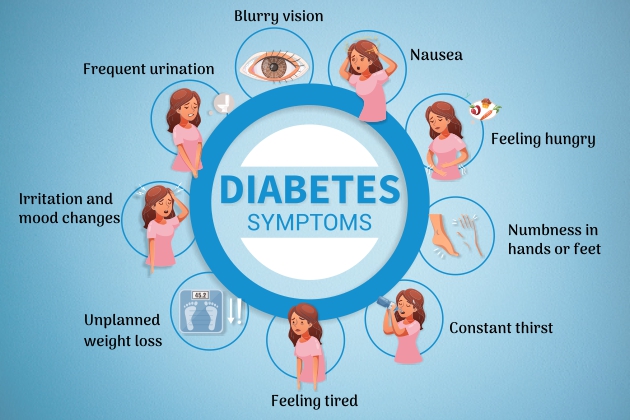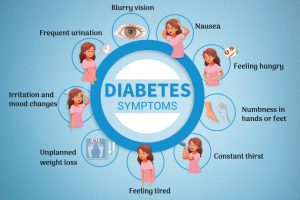
 Symptoms of type 1 and type 2 diabetes.
Symptoms of type 1 and type 2 diabetes.
Do you know the difference between the symptoms of type 1 and type 2 diabetes? The blood sugar level rises due to the absence of insulin, or insulin is not effectively used by our body. When the body attacks and destroys insulin-producing cells in the pancreas, sugar from the blood does not reach the body cells. As a result, the body suffers from type 1 diabetes. Whereas, when the body cannot effectively use insulin for the transfer of blood sugar to the body cells, it causes type 2 diabetes.
The initial symptoms of type 1 and type 2 diabetes are almost similar. But gradually these symptoms increase the risk of serious health complications if you are not monitoring the sugar levels, regularly.
There are various similar symptoms of type 1 and type 2 diabetes, but they occur in very different ways. Symptoms of type 1 diabetes develop quickly, in a matter of few weeks. It is usually diagnosed in childhood. On the contrary, symptoms of type 2 diabetes develop slowly over years. It is diagnosed usually in people having age above 40.
The similar symptoms of type 1 and type 2 diabetes are as follows:
- Frequent urination
- Feeling thirsty and drinking a lot
- Feeling hungry
- Blurry vision
- Feeling tired
- Itchy skin and dry mouth
- Cuts or sores take a longer time to heal properly
- Irritation and mood changes
- Numbness in the hands or feet
Symptoms of Type 1 diabetes
- Unplanned weight loss
- Nausea
- Vomiting
- Stomach pain
Symptoms of Type 2 diabetes
- Recent weight gain
- Formation of the dark patch of skin around the neck, armpit, and groin
- Frequent yeast infections
How Can We Manage Diabetes?
Currently, there is no cure to prevent type 1 and type 2 diabetes. It can only be managed by:
- Taking insulin properly in case of type 1 diabetes
- Monitoring sugar levels and blood pressure regularly at home
- Taking medication prescribed by the doctor that helps the body use insulin properly in case of type 2 diabetes
- With regular exercise
- Maintaining a healthy weight
- Following a healthy diet plan
If you find any symptoms or risk factors of type 1 or type 2 diabetes, get the insulin blood test done. This test is called as insulin fasting test. It requires fasting of at least 8-10 hours. It is done to measure the amount of insulin present in the blood so that diabetes can be monitored.